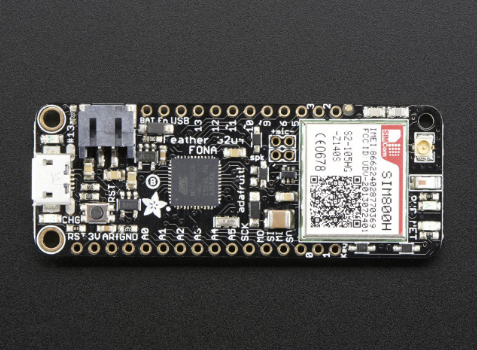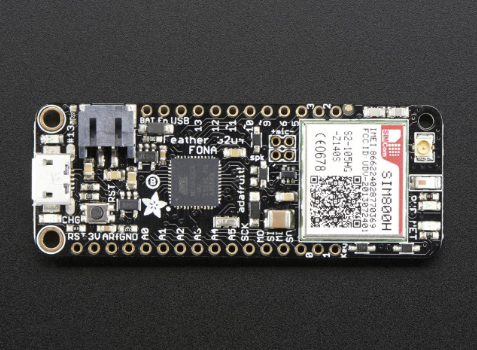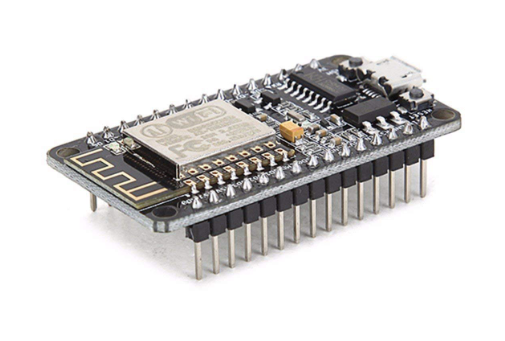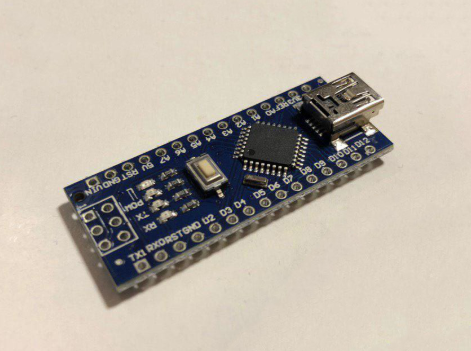Learn about IoT development boards including the Adafruit Feather 32u4 FONA, ESP8266, and Arduino Nano/Pro Micro.
Nowadays, it seems like almost every new device is connected in one way or another, and many projects require you to connect to a server to transmit sensor data or turn a switch on and off. So I want to introduce a few powerful development boards that are more on the affordable side that can be used for realizing your connected projects.
Note: they are listed in no particular order.
Adafruit Feather 32u4 FONA
This small development board uses the same microcontroller as the Arduino Pro Micro which has a built-in USB controller. Therefore, it can be used to communicate with other consumer electronics, like computers.
What makes the Feather 32u4 FONA interesting for IoT development is its cellular interface. You can make calls, send text messages, and connect to the internet without additional modules.
This board has a few more interesting features that definitely make it worth checking it out. Another feature that makes it work checking out is the built-in battery charging circuit that allows you to connect a rechargeable battery pack and use the onboard micro USB plug for charging it.
However, the board works at a logic level of 3.3V which might make it incompatible with other devices in your project.
Feather 32u4 FONA Pros
- Built-in cellular connectivity and wifi
- Onboard charging circuit
- Native USB support
- Generous amount of GPIO pins
- Small
Feather 32u4 FONA Cons
- Relatively expensive (around 50$)
- External antenna needed
ESP8266 based development boards
These popular boards can be utilized as Wi-Fi modules for other microcontrollers and also as development boards on their own. Like the Adafruit Feather, these boards have built-in Wi-Fi capability. However, they usually don’t support the use of cellular networks.
The large variety of available ESP8266-based boards makes it pretty easy to find the one that best suits your needs. If you just want to use it as a Wi-Fi adapter, you can get a small one. Larger models with USB connectivity are also available.
Most of them have an onboard antenna and they are usually Arduino compatible. So if Wi-Fi connectivity is what you’re looking for, then these are definitely worth trying!
However, be aware that many of these boards, especially the smaller ones, work on 3.3V instead of five.
ESP8266 Pros
- Cheap
- Built-in WiFi
- Easy to interface
- A large variety of different versions
ESP8266 Cons
- It can be hard to get support due to the number of different versions
- Usually wifi only
Arduino Nano/Pro Micro
These two boards are a good option when building a project that has to be small. Neither of them offers a wireless interface, which might make them seem like bad alternatives to the boards covered above. However, you can easily connect the Arduino boards to different modules, like the ESP8266.
These boards boast a large community that can help you when you run into problems.
Additionally, these Arduino boards work with both 3.3V and 5V, making it easy to connect them to other devices. Furthermore, the Pro Micro (with the 32u4 processor) offers native support for USB communication.
Nano and Pro Micro Pros
- Large community
- Large number of supported modules
- Easy to use
- Small and cheap
Nano and Pro Micro Cons
- No wireless connectivity
- Very basic features
IoT Development Boards for a Variety of Prices and Needs
There are a few new boards available, like the Adafruit Feather, which offer a wide variety of different features and interfaces. However, they can sometimes be quite expensive too. So if you want a cost-effective alternative, it’s never a bad idea to choose a well-established board with a large community, like the ESP8266 based ones or a small Arduino.






